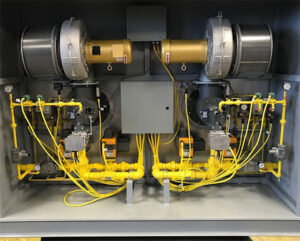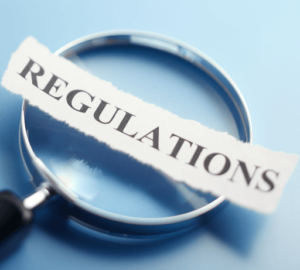Best Practices for Integrating New Components into Existing Combustion Systems
 In most industrial plants, combustion systems aren’t replaced all at once. Instead, burners, valves, and controls are gradually upgraded or swapped out as part of ongoing maintenance and improvement. While this approach is practical and cost-effective, it can also be complex. Mixing new parts with legacy equipment introduces potential issues with compatibility, compliance, and performance.
In most industrial plants, combustion systems aren’t replaced all at once. Instead, burners, valves, and controls are gradually upgraded or swapped out as part of ongoing maintenance and improvement. While this approach is practical and cost-effective, it can also be complex. Mixing new parts with legacy equipment introduces potential issues with compatibility, compliance, and performance.
To make sure upgrades strengthen your system instead of causing downtime or risk, here are six best practices for successful integration.
1. Start With a System-Level Assessment
Look at the entire system before making changes.
- Review current control sequences and safety logic
- Check wiring methods, voltage levels, and I/O limitations
- Confirm spacing and mechanical layout around existing equipment
- Map out interlocks and dependencies across valves, burners, and sensors
2. Check Compliance With Current Codes
Even if your system was compliant when installed, new components can trigger updated NFPA requirements.
- Verify requirements under NFPA 85, 86, or 54
- Adding a new shutoff valve may require a companion vent valve
- New burners often call for updated flame safeguard controls and purge cycles
- Adjust shutdown thresholds when replacing pressure switches
3. Match Specifications Across the System
Avoid mismatches by verifying key technical parameters.
- Ensure compatible input/output signal types (4–20mA, 0–10V, etc.)
- Check pressure ratings, Cv values, and valve flow characteristics
- Confirm burner turndown ratios and flame signal strength
- Match voltage, amperage, and enclosure requirements for electrical components
4. Use Retrofit-Ready Components When Possible
Select components designed for legacy system integration.
- Drop-in valve bodies that fit existing flange dimensions
- Backward-compatible flame safeguard controllers
- Burner mounts or adapters sized for legacy furnace openings
- PLCs or HMIs with Modbus drivers for older protocols
5. Update Documentation and Train Operators
Integration isn’t complete without updated procedures and training.
- Revise wiring diagrams, P&IDs, and control logic
- Document new purge cycles, alarm conditions, and start-up logic
- Update lockout/tagout and shutdown procedures
- Train operators on system changes and fault response
6. Test in Stages Before Full Commissioning
Gradual testing reduces the risk of last-minute surprises.
- Verify valve actuation and feedback signals
- Check interlock sequences in manual mode
- Test flame detection response and shutdown timing
- Simulate fault conditions to confirm fail-safe performance
Integration Is More Than Installation
Adding or replacing components is more than plug-and-play. Proper integration requires mechanical, electrical, and safety expertise. Working with a full-service combustion equipment provider will extend the life and performance of your combustion system. Taking chances can create new risks.
Engineered Combustion Systems (ECS) specializes in retrofit integration for burners, valves, controls, and full fuel trains. Our team ensures seamless compatibility, safe operation, and code compliance, backed by expert engineering and responsive field service.
Call us at (248) 549-1703 or Request a Quote to discuss your next combustion upgrade.

 Navigating the Challenges of Integrating New Equipment with Existing Systems
Navigating the Challenges of Integrating New Equipment with Existing Systems  The Role of Environmental Regulations in Combustion System Design
The Role of Environmental Regulations in Combustion System Design